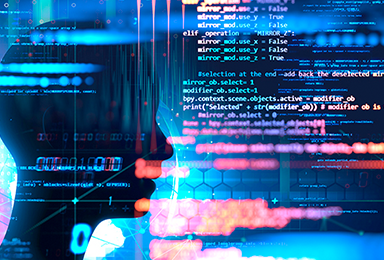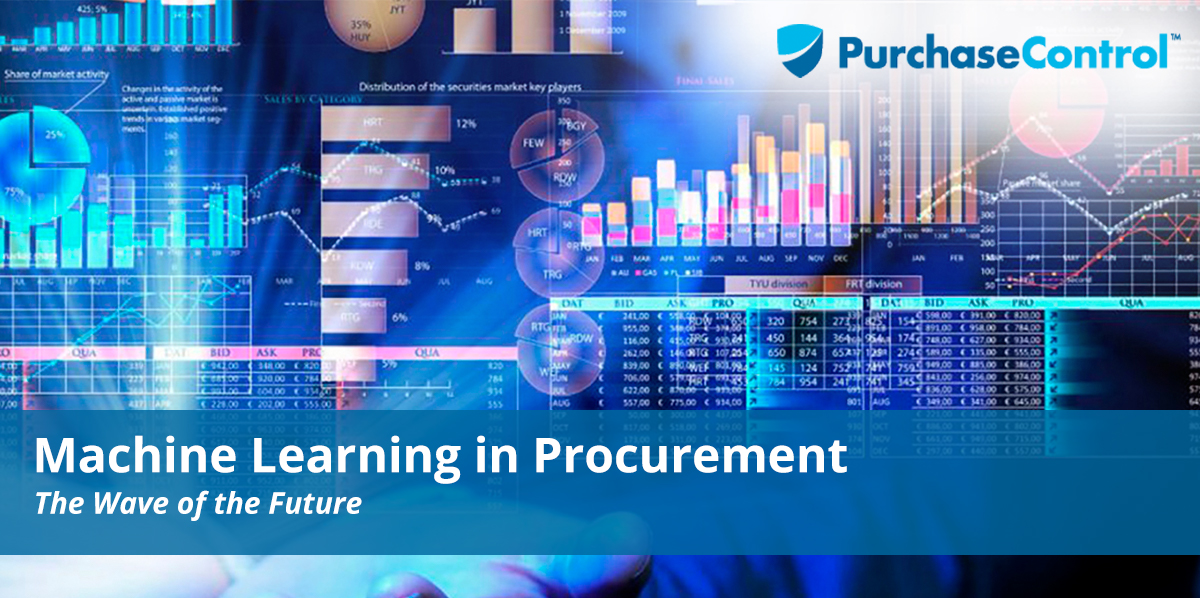Machine Learning in Procurement
In terms of process automation, procurement organizations are working hard to get it done. Chief procurement officers have automated processes for many years including payroll, Administration, invoice generation, material resource needs calculation and material flow tracking. Automation has, for the most part, eliminated redundancies in the workflow so that organizations can dedicate more time toward strategic activity and collaboration within business networks.
Despite all this, exception handling seems to be higher than ever as companies try to get a better handle on their suppliers and partners in an attempt to gain a competitive advantage. Today’s procurement professionals are stretched to their limits constantly bombarded with requests and each one of them requiring a lot of document analysis.
On average, companies waste between 3 and 4% of their overall external spend on unnecessary transaction costs, Regulatory non-compliance, and excessive inefficiencies. For an organization with an annual procurement spend of $1 billion, cutting off these leakages can add $35 million per year back to the profit margin. The good news is, machine learning can help speed up the exception handling process to help you get money back into the pocket. The machine learning process does all of the thinking and the work for you.
Machine learning is a form of AI that has a lot of immediate applications within procurement. It is the natural successor to robotic process automation in terms of automated procurement process evolution.
When it comes to procurement, machine learning is the application of self-learning automated statistics that are used to solve defined challenges or improve operational efficiency. The difference between it and robotic process automation is that with machine learning, it is possible to learn and improve over time.
Common Barriers to Full Automation
Machine learning is ideal for things that require complex rules and pattern recognition. This is unlike artificial intelligence and robotic process automation, which are much simpler to set up and implement. Through demonstrating a basic level of human judgment, machine learning can for instance assign transactions to formal spend categories and subcategories. this first step in uncovering sourcing opportunities can make the process move from traditionally time-consuming to an automatic process that happens in real-time.
Types of Machine Learning
There are four main types of machine learning that can be used within procurement processes. Each one of them requires a varying degree of human intervention.
Supervised Learning
Supervised learning is an algorithm that is taught with patterns using past data. These patterns are detected automatically in new data. You provide supervision in the form of correct answers to train the algorithm to find the patterns in the data. This type of machine learning is most commonly used in areas such as spend classification.
Unsupervised Learning
Unsupervised learning is a type of machine learning where the algorithm is programmed to find new and interesting patterns in completely new data. There is no supervision so the algorithm is not expected to surface specific correct answers. Instead, it looks for logical patterns within the data. This type of machine learning is hardly ever used within any critical procurement function.
Reinforcement Learning
Reinforcement learning is where the algorithm decides how to act in certain situations and the behavior is either rewarded or punished depending on the consequences. This type of machine learning is largely theoretical when it comes to procurement.
Deep Learning
Deep learning is the advanced class of machine learning. It is inspired by the human brain where are artificial neural networks work to continuously improve their ability to perform a task. This is an area with emerging opportunity in procurement.
“Classifying spend into various procurement categories as one of the oldest standing challenges in procurement spend Analytics. As such, it is one of the first applications where artificial intelligence is widely used today.”
How Machine Learning Can Further Automate Procurement
Various aspects of artificial intelligence have the potential to reduce or solve the spend classification problem. Many software solutions today involve some form of supervised machine learning.
Spend Management
To start, machine learning algorithms automatically classify new spend data into procurement taxonomy. The software can also provide suggestions for category experts with the use of a classification tool. The machine learning-powered AI classifier can give a confidence level for each classification suggestion and then go beyond new spin classification to spot errors made in previous rule-based classifications by human category experts. Human category experts can then review or validate AI classified data and provide valuable training input for future classifications and improved spend management.
Supplier Management
Machine learning can help improve supplier management. Procurement organizations need to make sure that their suppliers are stable and financially viable. Procurement can use machine learning to determine the most competitive right to negotiate and discover the most favorable contract terms to foster a more successful partnership.
Capabilities Matching
Machine learning can also help in terms of capabilities matching. All buyers want their suppliers to be able to fully meet current and expected needs while delivering exceptional service. However, it can be tough to determine reality from all of the marketing hype. Machine learning can scan the industry for new competencies and align them with business requirements so procurement can develop the process is to continuously test the ability of both existing and new partnerships.
Monitoring and Tracking Efficiency
With machine learning, organizations can track and monitor the efficiency of every organization within the supply chain and rate suppliers based on their performance. This allows procurements to hold vendors accountable while also ensuring operations continue to run at peak standards.
Compliance Management
For organizations that have issues with contract compliance or regulatory compliance concerns, machine learning can find hidden patterns in the data sets that indicate whether a supplier is not meeting their regulatory requirements. The machine learning can do this much faster and more efficiently than any human. With the data available, the procurement function can discuss these issues with suppliers much easier and in a manner that is decisive and productive.
Contract Management
Natural language processing is a branch of artificial intelligence that’s focused on understanding interpreting and manipulating human language. Where procurement is concerned, NLP can uncover insights from existing data or create new ways to streamline time-consuming processes. One of these processes is in contract management the legal contracts between you and your suppliers contain a lot of valuable information for procurement including payment terms, termination dates in renegotiation rights. Historically, this kind of information has not been readily accessible for procurement teams because contracts have been written and stored offline or shared in online folders where the data contained in the contract is not readily available. NLP has made it possible for procurement to mine contracts for valuable data with text parsing. Contract management software can you use parsing algorithms to scan and interpret large amounts of contracts for critical information.
Increase Procurement Value
With machine learning, the procurement function can deliver maximum quality in volume to the bottom line. With machine learning, balanced scorecard and can be automated to track the efficiency of supplier relationships and the effectiveness of purchase goods and services across all transactions. In addition, machine learning can also empower the team to develop rules that allow for flexibility and responsiveness while keeping a tight control on risk management.
As technology continues to evolve, we can expect that it will deliver more value and opportunity for organizations. At this point in time, it is impossible to ignore the potential machine learning has as a stepping stone toward providing quick value that benefits the entire organization as well as its customers. Procurement departments that are willing to adopt this form of artificial intelligence in their processes will have a competitive advantage over those that do not. Though implementing this kind of digital transformation can be a significant investment, the cost savings it will provide overtime make it well worth it.
PurchaseControl can help you maintain data for machine learning purposes.
Find Out How








